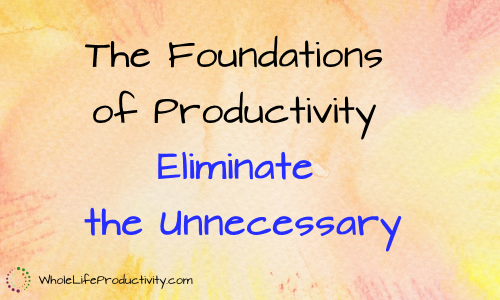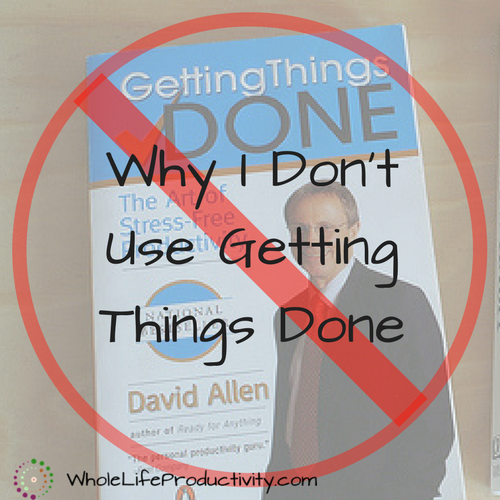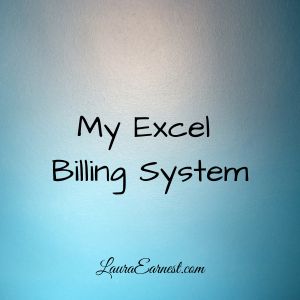
Eliminate the Unnecessary: The Foundations of Productivity

Want A Summary of the Series?
Become a Legacy Patreon Subscriber and get access to all past Patreon rewards, including the exclusive summary of all the Foundation articles!
If you were trying to take a letter to the mailbox, would it make sense to walk a mile in the opposite direction first? Or if you were putting dishes in the dishwasher, would it make sense to completely hand wash them first?
Productivity requires a solid foundation if the methods are going to be successful. Just like every building must have a solid foundation if it is going to remain standing, productivity must also have a solid foundation unless you want it to crumble underneath you.
We are in a ten-article series on the foundations of productivity. Today we will look at another fundamental rule: eliminate the unnecessary.
What Is Productivity?
Productivity has two pillars: efficiency and effectiveness. Doing the right things in the best way.
If you are being efficient, but doing the wrong things, your results will not be meaningful.
If you are doing the right things, but putting in extra work that has little return on effort, you are slowing yourself down.
Why Efficiency Is Overlooked
Everyone automatically equates efficiency with productivity. But few people actually take a good look at their processes. This means that often times extra work creeps in without anyone really being aware of it.
Let’s look at an example: you are asked to pull sales numbers at work for a specific product line. The next month you are asked to do the report again, adding on a few more products. So you recreate your steps, and produce the report. It goes on for a few months, and a product is retired, but the sales reports are still required for that product because it is winding down. So it stays that way until one day you look at the report and realize you are pulling data for products that haven’t been available for months or years.
Not too efficient, but it crept in unnoticed.
How To Spot Unnecessary Steps
I am a big fan of process audits, particularly when it comes to anything we repeat on a regular basis.
To do a process audit, you look at each step and ask if this is the only way to do it, and if it is the best way to do it.
For example, you need to descale your coffee pot at home. As the first step, you have always ordered the expensive solution because that is what came with the machine, and this adds days onto a relatively short process. However, in looking at it again, you see that you can use plain vinegar, and this cuts your time (not to mention expense) way down.
Or perhaps you are looking at backing up your photos on your hard drive. You have always figured out which pictures haven’t been backed up based on the date, and then upload those to the cloud. A more efficient way might be to have backup software monitor the folder where you keep the pictures and back them up to the cloud automatically.
Designing An Efficient Process
So now that you know how to spot unnecessary steps, you also need to be aware of efficiency when you are doing something you know you will repeat.
The approach here is simply to write the steps down as you are doing them. That way you can turn them into an SOP, and you can also revisit the process to see if what you did in pursuit of getting to goal is the best way to approach it.
Maybe as you were putting together the company newsletter, you needed to collect information from four different people, all of whom sent you information in different formats. It worked for the first month, but for the second you decided to standardize the input into a Google Form, thereby eliminating the need for you to retype and reformat from email, word documents and other things.
Conclusion
Inefficiencies can be eliminated either at the outset of a project, or after the proces is in place. Either way, by eliminating the unnecessary, you make yourself a better productivity agent.
Want A Summary of the Series?
Become a Legacy Patreon Subscriber and get access to all past Patreon rewards, including the exclusive summary of all the Foundation articles!




